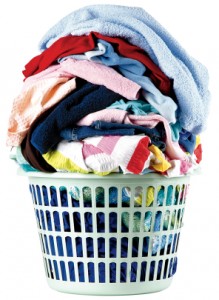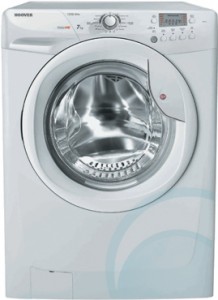How to clean a washing machine
January 25th, 2012
The need to clean a cleaning machine may sound odd, but once you consider the grime that gets thrown in it only makes sense that at some point the dirt will build up. Smell is a good indication of the health of your machine. If your clothes start coming out of the washing machine stinkier than when they were put in, it’s time to clean the machine.
It’s easily done and if you’d like to maintain your washer in good working order, and get sparkling clean clothes, you’ll want to consider cleaning it every three months or so.
Vinegar, lemon juice, de-scaler, soda crystals or bleach?
To clean your washing machine you’ll basically run it on empty on a hot wash, adding one of the above-mentioned ingredients.
Bleach works well to sanitise as well as removing stain-causing rust.
A cup of vinegar (mixed 3:1 with water) or a cup or two of pure lemon/lime juice will work to sanitise the washing machine tub and eradicate any mouldy smells.
De-scaler or soda crystals will remove limescale residue; but be careful with how much you use, as soda is mildly corrosive and may attack the heating element.
Things to consider when cleaning a washing machine
Careful: Mixing bleach with vinegar and/or lemon juice will emit highly toxic fumes!
An empty front loader may refuse to fill on empty, so just chuck a couple of old towels in along with the vinegar or whatever your chosen cleaner is.
It’s a good time to check the general working order of your machine. For example, don’t let your washing machine bounce around until it breaks – make sure it’s level. Have a look at the hoses and connections; are they cracked or blistered? Are any of the fittings corroded? Attending to these details earlier will save hassle and headache later.



i use white vinager after washing to keep it clean
How do you clean the rubber seals on a front loader?
you can apply exit mould as well, let it soak for 10 mins then wipe clean with chux. run a hot wash and leave the door open for a day if you can.
I was told not to use bleach because it would ruin the rubbers.
I run a 60 minute cycle with a cup of white vinegar about once a month no smells no scum spotlessly clean (and very cheap)
Exit mould works really well and is a simple solution to the ugly mould in front loaders
I use a cup of white vinegar on the hottest wash, and use this once a month in the machine.
what ratio of vinegar to water
I have been using vinegar as my rinse liquid for over 12 months cleanest machine in Perth every couple of months take out the spindle and soak the litttle int back as well
DO you add the vinegar in the detergent bin or in the actual machine for a front loader
This is so true; bleach doesn’t actually ruin the sealsbut it cleans all the grime from them and then they leak and the seals are usually directly above the motor in some models, which then leaks and does its fatal damage. I know I have done it to two machines. My last machine wasn’t that old either and I was soaking my washing in a water bleach solution and I forgot that was exactly what I had done to my first machine. If you need to soak with bleach do it in a tub and please dont do it as a cleaner of a machine. It becomes expensive.
Im glad I’m not the only one with mould on the front rubbers.I have a Miele washing machine and I luv it but dont like the design of the front door rubbers..I have contacted Miele and it was clean it with vinegar and leave the door open. doesnt do much for the mould..but will try exit mould
Any ideas on how to remove mould from the rubber ring on a fron loader washing machine? I always put a piece of sponge in the lip to soak up any water that may have gathered. It has worked really well up until now. I think the humid conditions we are experiencing in Perth have added to this problem. I know several others who have the same problem with their front loading machines.
We have all tried everything we can think of.
Hi! Most people add the vinegar to the detergent or softner bin. Happy cleaning!
Hi Mario – you might like to start with a small ammount, say half a cup of vinegar with a cup and half of water and see how your machine responds. I’ve heard of people using up to three cups of vinegar, but remember all the above mentioned ingredients have varying levels of corrosive qualities. Happy cleaning!
Hi Kathy – it looks like many people are suggesting Exit Mould. This is a bleach-based product so you may want to use it with caution, at least at first. Leaving your front loader door slightly adjar between washes could be a good idea for you. Good luck!
Wow this is quite unfortunate! Two washing machines, expensive indeed. As with using any corrosive substances, caution is best. And using them conservatively is a good idea. At the end of the day a bit of elbow grease also works! Thanks for your sharing your experience with us!
Hi Evie – if you’re in doubt it might be best not to use such a corrosive susbtance as bleach. You may like to start with a bit of lemon juice or vinegar (these are quite popular) and see how your machine responds. Perhaps even just a hot wash will do. Let us know how you go!
Hello all, are you using liquid detergent or non bio powder? if so there are no bleaching agents in these products so that will allow the mould to grow. Use a good quality bio powder (Ariel) and you should not get any of these problems
That’s a great tip, thanks Tony!
I have told people to use a product called Washing Machine Magic, just follow the instructions
I put white vinegar in the rinse section of my front loader for all loads except towels. I don’t do it on the towels load as I have to use fabric softener. Keeps the machine clean and prevents fabric softener build up so I can then wash my Enjo fibres